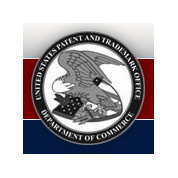
You can create a great software or Internet invention that is completely novel, unobvious and has utility, but you still may not qualify for a patent. Why not?
Congress enacted 35 USC §101 to identify which inventions are the proper subject for patents. That section states:
Whoever invents or discovers any new and useful process, machine, manufacture, or composition of matter, or any new and useful improvement thereof, may obtain a patent therefor, subject to the conditions and requirements of this title.
The statute creates four categories of inventions – a process (that is, a method of doing something), a machine (a thing that does something), a manufacture (that is, something that is made from something else by the work of humans or machines), and compositions of matter (that is, a substance, as in a chemical). So far, nothing excludes our software, Internet or smartphone app inventions. All could be claimed as processes or as machines (for example, as a programmed computer or phone).
The U.S. Supreme Court, has whittled down the list of inventions that can be patented further by excluding ‘laws of nature,’ ‘natural phenomena,’ and ‘abstract ideas.’ These judge-made limitations are known as the ‘judicial exceptions.’
In an early example, Samuel Morse, the inventor of the telegraph, tried to patent electromagnetism used for communication without any limitation on structure for the application of the electromagnetism. The Supreme Court declined, finding that other people needed to use the ‘abstract idea’ of electromagnetism, too. In recent years, the Supreme Court has used these judicial exceptions to forbid patenting of almost all software (Alice v CLS Bank), of methods of treating disease (Mayo v Prometheus Labs), of genetic discoveries (Ass’n for Molecular Pathology v. Myriad Genetics), and of business or financial relations (Bilski v Kappos).
The Supreme Court’s recent decisions are all but impossible to apply predictably. Nonetheless, the Supreme Court decisions are the law of the land and the USPTO must apply those decisions many times every day. This is why the USPTO develops guidance to inform the actions of the more than 8500 patent examiners and administrative judges. The USPTO guidance attempts to synthesize the various, often contradictory, court decisions into a form that can be applied by the USPTO staff, and hence by the rest of us.
The USPTO’s most recent guidance was published January 7, 2019, and relates to the ‘abstract idea’ judicial exception. The USPTO grouped the types of ‘abstract ideas’ from the court cases together. The USPTO concluded that ‘abstract ideas’ include the following:
a) mathematical concepts (relationships, formulas, equations, calculations);
b) ‘certain methods of organizing human activity,’ (economic, commercial, legal interactions, advertising and marketing, business relations, social interactions such as teaching); and
c) ‘mental processes’ (processes that could occur in the human mind, even if the process occurs on a computer).
As the first step, the examiner will initially determine whether the claim includes one of the judicial exceptions, such as an abstract idea. If so, the examiner determines whether the claim includes a concrete application of the exception so that the claim can be patentable. Even if a claim does not include a ‘concrete application,’ the claim still may pass patent muster if the ‘inventive concept’ is adequately new and unconventional.
As an example, consider a software invention that claims an improved way to manage operations within a computer to make the computer work better. As viewed by the courts, all software includes either calculations or ‘mental processes’ and therefore the claims to the software include an abstract idea. The application of the invention to cause the computer to work better indicates that the otherwise unpatentable abstract invention has a concrete application and is patent-eligible. Improving the operation of the computer is about the only situation where software is patentable.
Of course, the claim still must meet the other patent requirements, such as novelty, non-obviousness, definiteness and enablement.
Confusing? You betcha. Predictable? Not very. Nonetheless, the new guidance is an improvement over what the USPTO has done in the past and will result in more inventions being patent-eligible.
— Robert Yarbrough, Esq.

